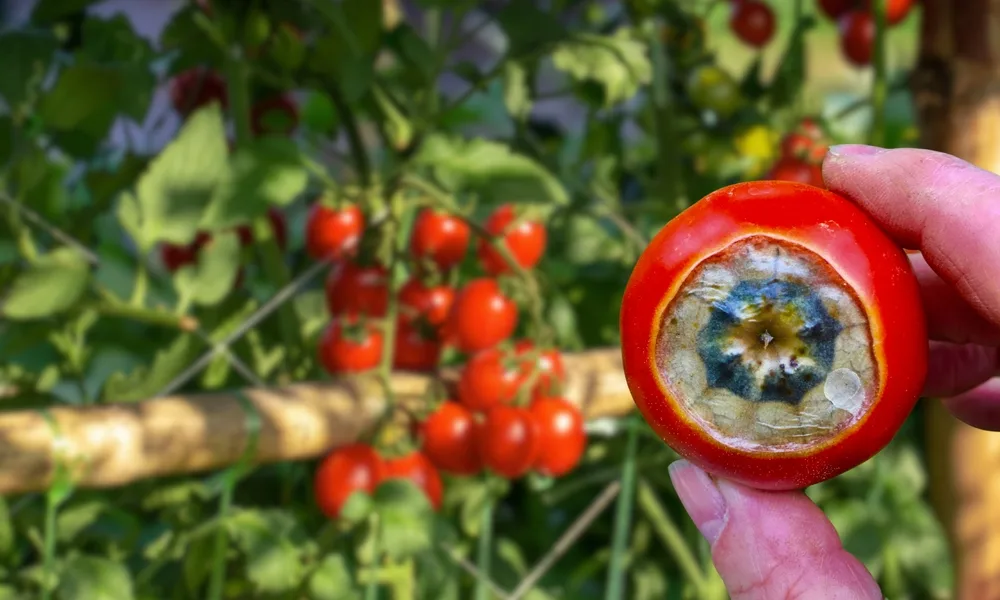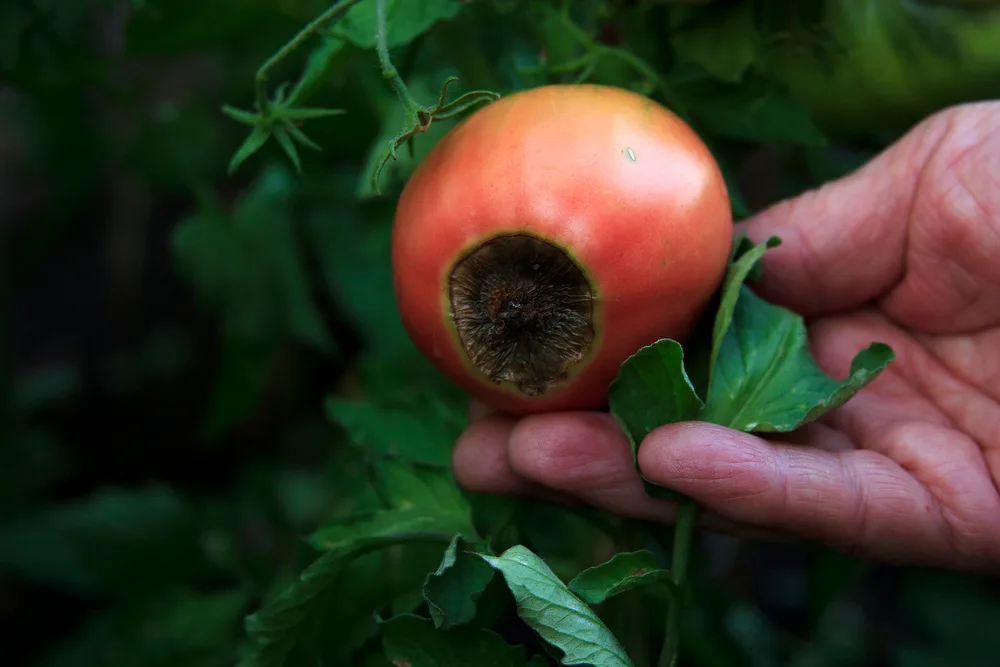Tomatoes are a favorite in backyard gardens, but they often face unwanted diseases like blossom-end rot, which makes the fruit inedible and can’t be fixed once it appears.
Recognizing and preventing blossom-end rot is crucial for healthy tomatoes, so your summer dishes can always feature these tasty fruits. Gardening experts have shared their tips to help you keep your tomatoes free from this disease.
What Is Blossom-End Rot?

Blossom-end rot causes the ends of fruits to develop black, rotten spots. While it can affect fruits like peppers, squash, pumpkins, eggplant, and watermelons, it’s especially common in tomatoes.
Although any tomato can get blossom-end rot, it’s more common in larger types like paste and plum tomatoes. Smaller varieties like cherry or grape tomatoes are less likely to be affected. Don’t see it as a gardening failure—it happens to even the best gardeners.
Signs of Blossom-End Rot
Look for sunken, leathery, or rotted areas near the blossom end of the fruit. It usually starts as a small, water-soaked spot and can turn into a large, black, rotten area as the fruit grows.
Unlike other tomato diseases, blossom-end rot has distinct black spots at the blossom end. Don’t confuse it with anthracnose (which affects the sides and tops of tomatoes), late blight (brown lesions), or sunscald (bleached, white, or yellow areas).
Common Cause of Blossom-End Rot
Blossom-end rot happens due to low calcium levels in the fruit, which cause the cell walls to break down. Calcium doesn’t move as easily through the plant’s system as other nutrients. When there’s not enough calcium, it goes to new leaves and shoots first, reaching the developing fruits last. This usually occurs during early or mid-summer when the plant grows fastest.
How to Prevent Blossom-End Rot

While you can’t reverse blossom-end rot on affected fruits, you can prevent it in the future by managing soil calcium levels and addressing environmental stressors.
Maintain Calcium Levels
Calcium deficiency is the main cause, so ensure your soil has enough calcium. Test your soil to check its calcium content. If it’s low, add gypsum or crushed eggshells. Calcium-based foliar sprays on the leaves can also help.
Water Consistently
Keep soil moisture levels steady. Avoid both overwatering and underwatering. Consistent watering helps ensure calcium is available to the roots. Overwatering can wash calcium out of the fruit faster, causing a deficiency.
Apply Mulch
Mulch helps maintain consistent soil moisture and prevents blossom-end rot. Apply a layer of organic mulch around the plant’s base to keep the soil moist but not waterlogged.
Maintain pH Levels
Keep soil pH slightly acidic to neutral (around 6 to 7). Test your soil’s pH with a meter and adjust if needed by adding the right materials.
Avoid Excessive Digging
Too much digging around the plant’s roots can cause water stress and calcium uptake issues. Avoid unnecessary digging, especially when fruits are forming, to maintain healthy nutrient absorption.
Frequently Asked Questions
Can overwatering cause blossom-end rot?
Yes, both overwatering and underwatering can lead to blossom-end rot by affecting calcium levels. Overwatering is more likely to leach calcium out of the soil.
Can you eat a tomato with blossom-end rot?
You can’t eat the rotten spots, but the rest of the tomato is usually still good. If caught early, it’s just a blemish that can be cut away. If it’s progressed too far, it might have rotted inside.
Can blossom-end rot be reversed?
No, once a tomato has blossom-end rot, it can’t be reversed. However, you can prevent it in future fruits by adjusting soil calcium, maintaining consistent moisture, and managing environmental factors.
